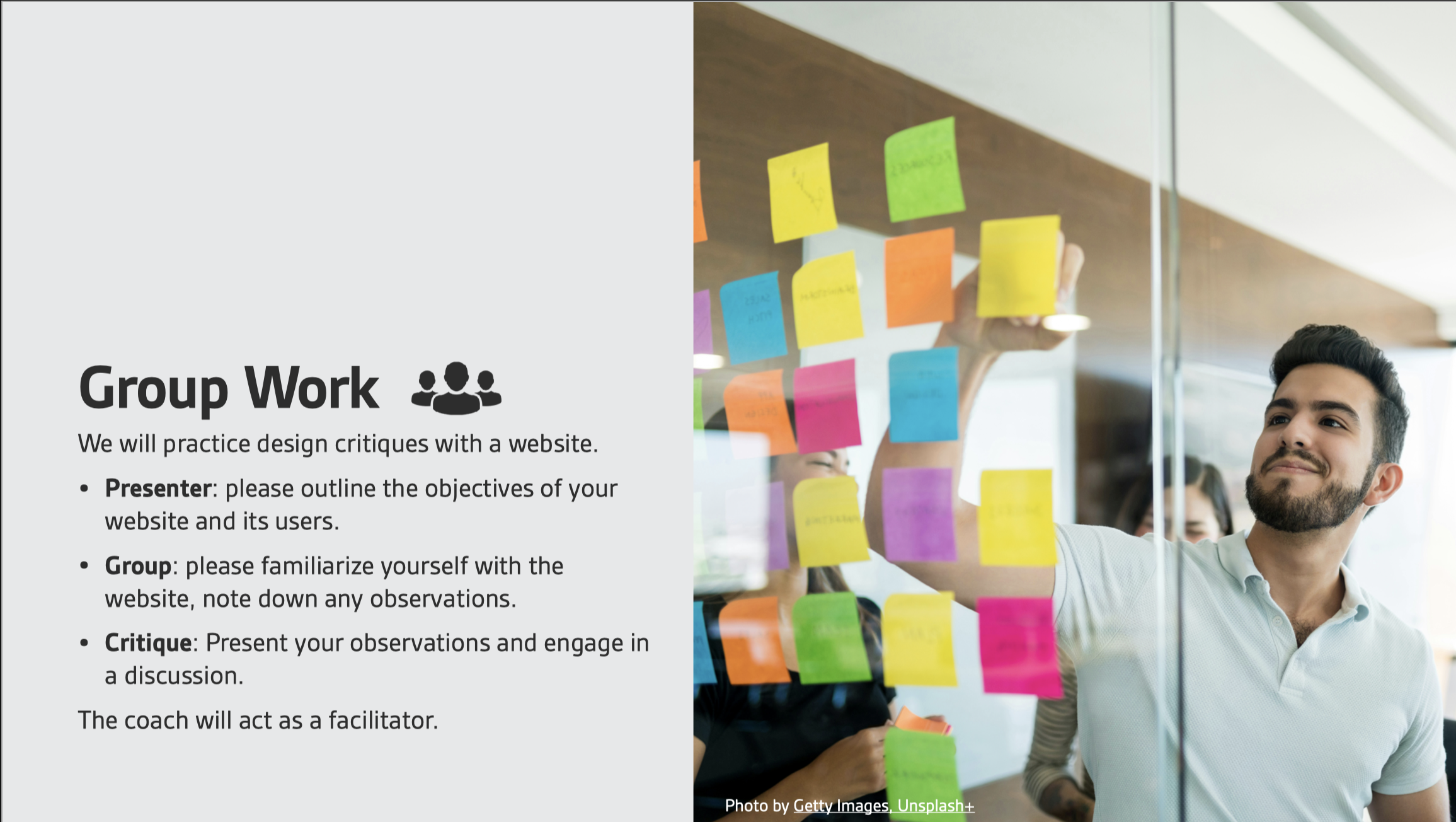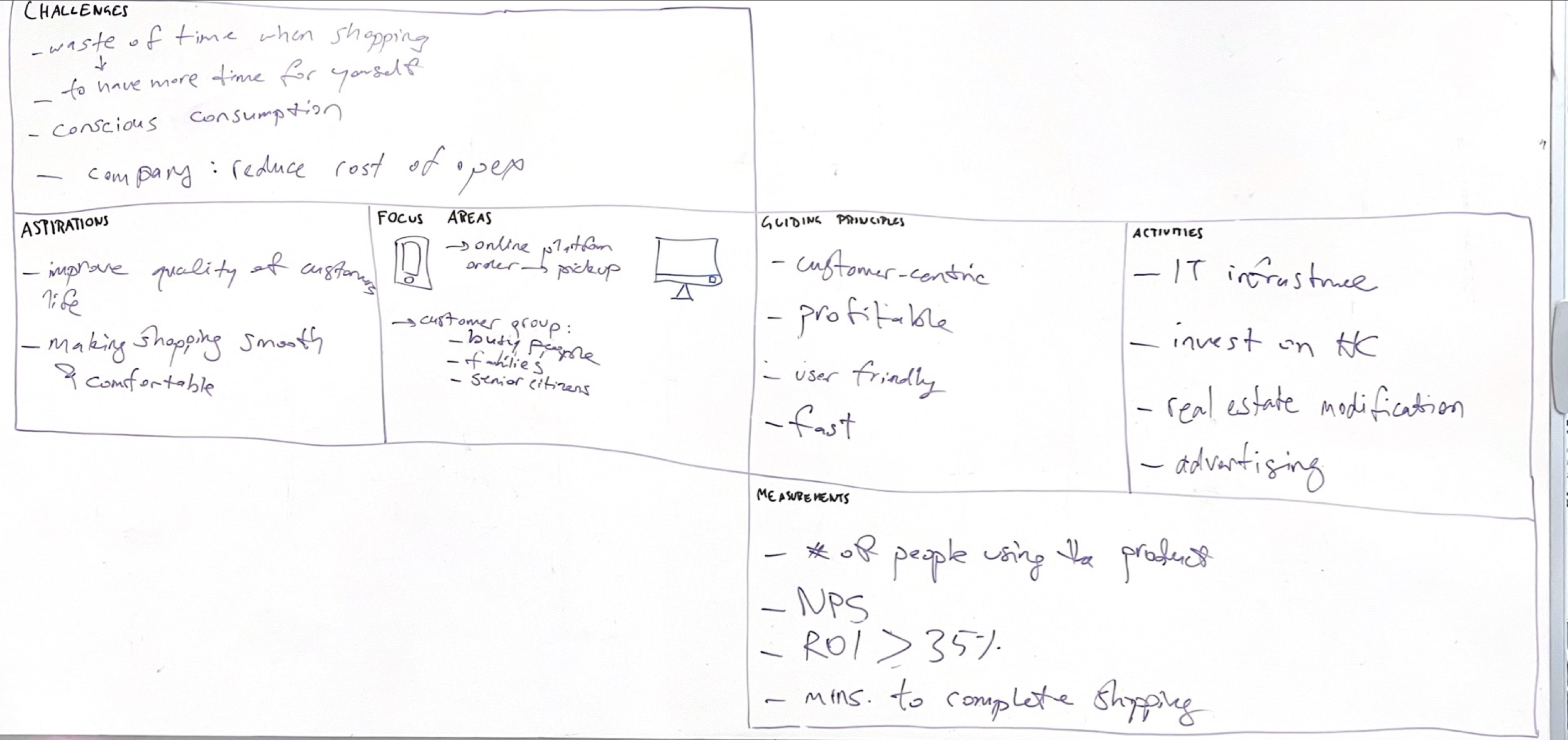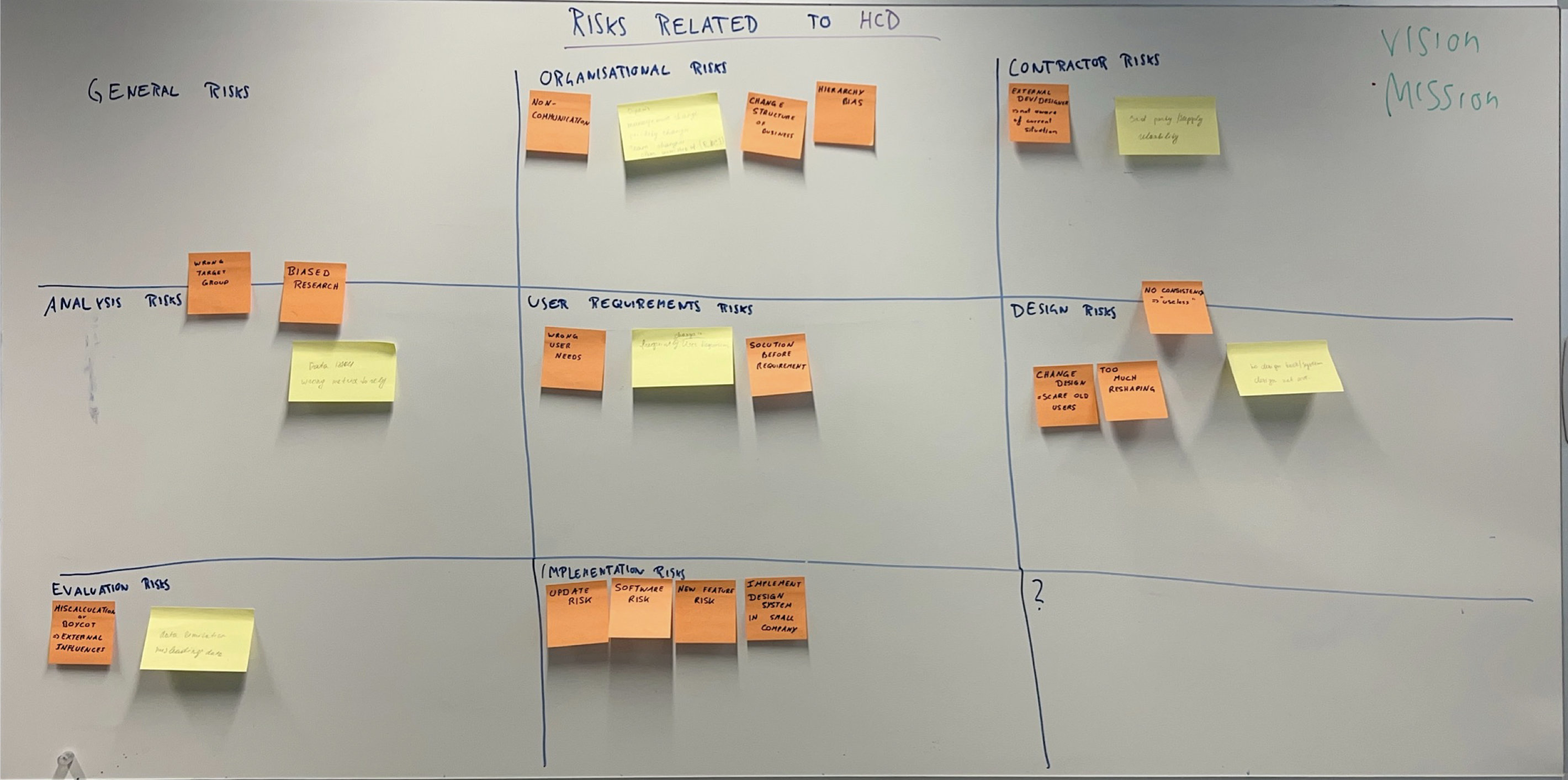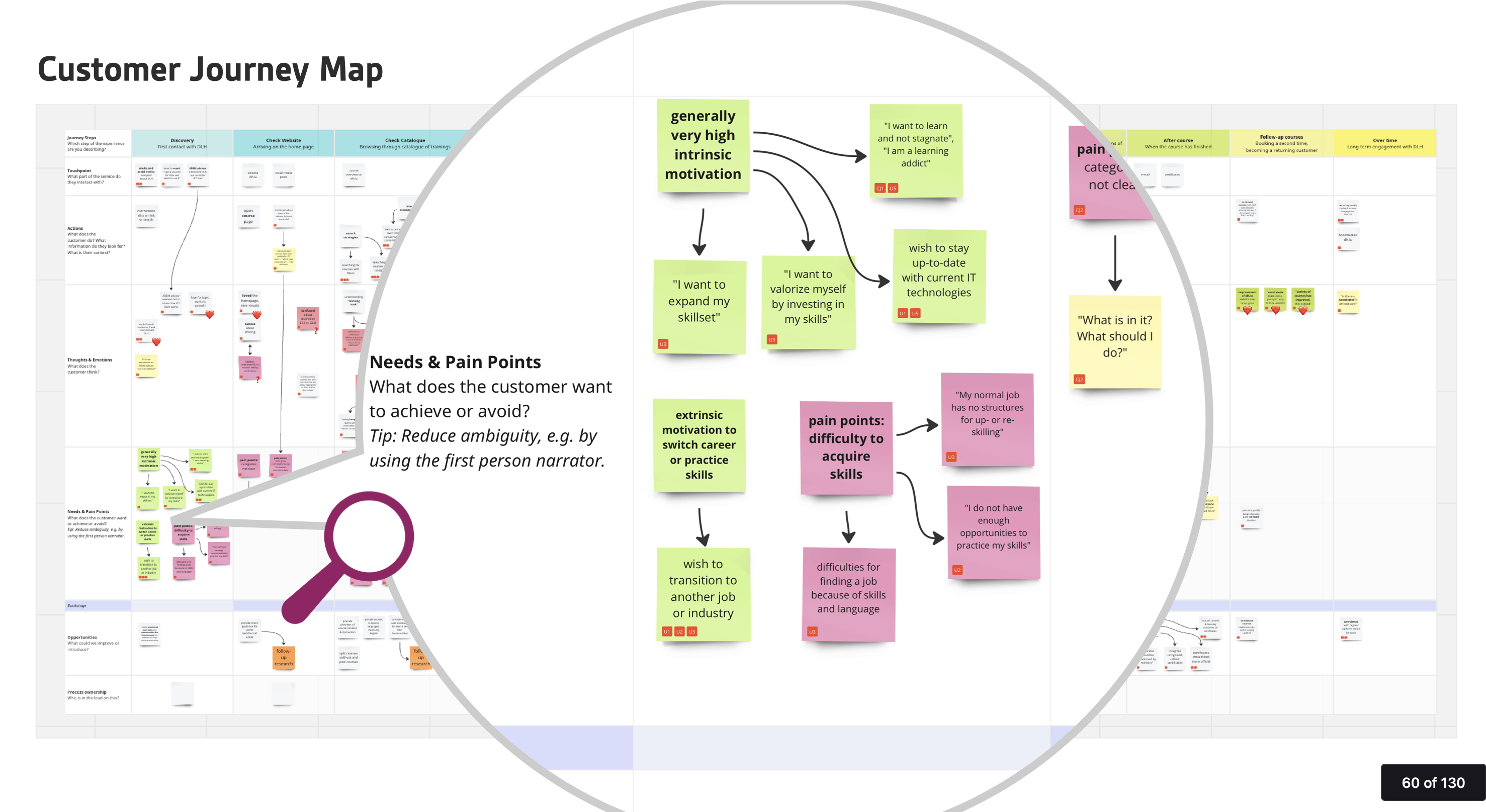Learning Track at Digital Learning Hub Learning Track UX: Human-Centered Design, Research, and Management
Covering the entire human-centred design process, my learning track helped learners get a kick-start in user experience (UX) and work on a collaborative project for their portfolio.
In a nutshell
In a learning track (current iteration: 96 hours), I taught the basics of user experience (UX) human-centred design based on an iterative process. Each learner worked in a collaborative UX project with two iterations, building on user research, prototyping, and usability testing. Furthermore, the learning track covered an introduction to fundamentals of UX management to help learners describe the business value of UX – a vital concern for anyone working in the industry.
Hands-on learning with theoretical foundations
My learning track follows the human-centred design process as outlined in the CPUX-F curriculum by UXQB, with various additions and enhancements based on several years of teaching experience.
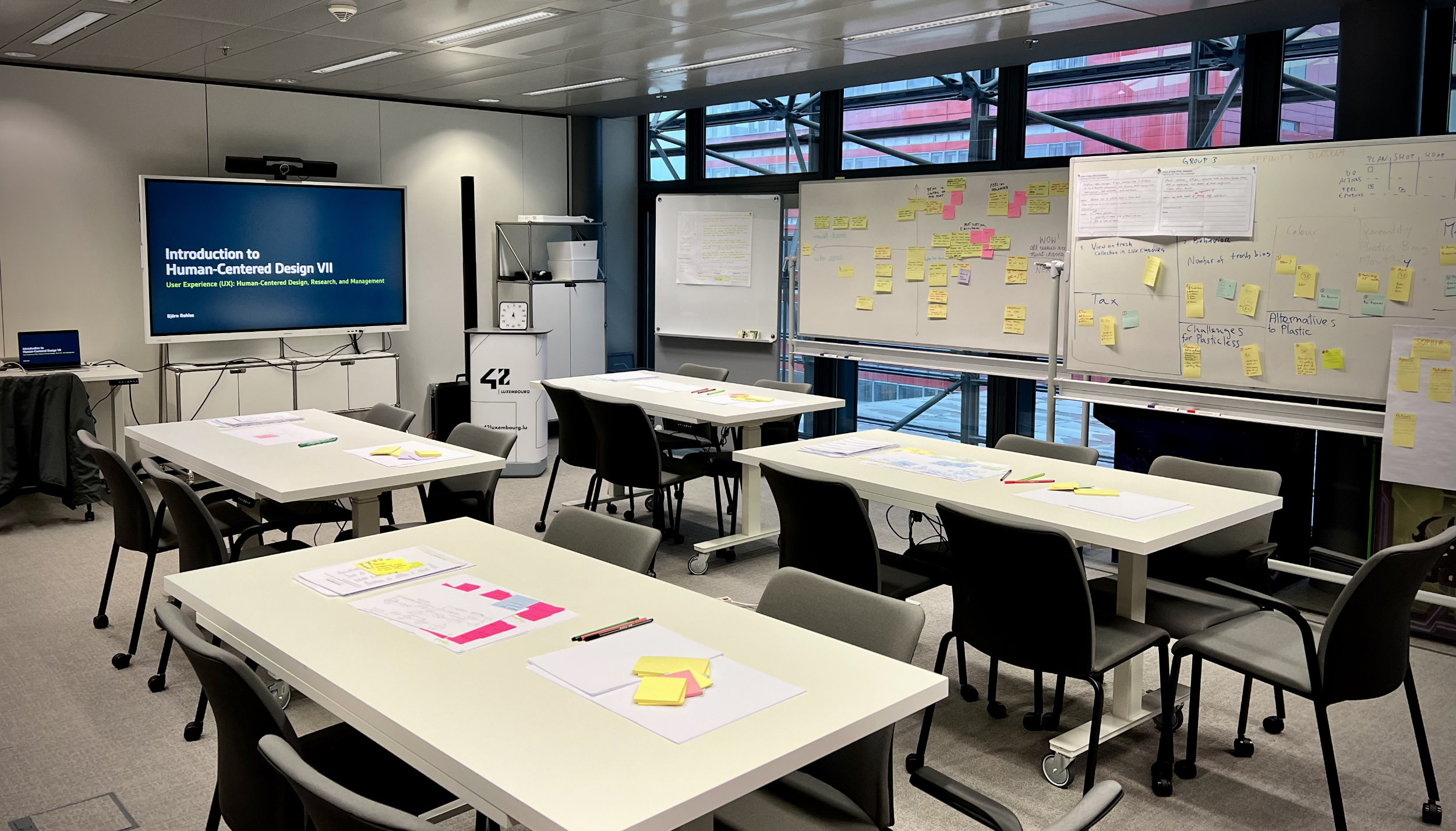
Collaborative project work
In the first session, learners create collaborative groups around a key challenge, such as enhancing education or reducing pollution. They will continue working on this challenge throughout the learning track and integrate the results of their group in a UX design portfolio.


Theory and hands-on activities
Each session starts with theoretical foundations, for example tips and tricks on performing user interviews. Afterwards, learners apply their learnings right away in various hands-on activities, sometimes based on custom-made and validated templates.
Syllabus of learning track
- Crash course: understanding key terms and human-centred quality objectives (e.g., usability, accessibility, user experience), overview of the human-centred design process and disciplines, understanding UX job roles
- Planning the human-centred design: group setup based on a selection of challenges, benchmarking, potential gains and pains of customers
- Ethical foundations for user research
- User Research: context of use, user groups, user research methods (interviews, observations, focus groups, surveys, cultural probes, co-design methods), analysing user research results (affinity diagramming), user research deliverables (personas, journey maps, as-is scenarios, user group profiles)
- Hands-on activity: interviewing potential customers and creating personas, journey maps, and user group profiles
- Specifying user requirements: point-of-view statements, user needs, user requirements, prioritising user requirements (Kano scheme)
- Hands-on activity: quiz to identify good and bad user requirements, converting user research results into requirements
- UX design fundamentals from psychology (e.g., mental models, affordances, interaction costs, cognitive load, interaction principles)
- Hands-on activity: brainstorming of solutions to the identified user problem
- Early UX design: conceptual modelling, moodboards, task models for design, storyboards
- Hands-on activity: storyboards and moodboards of promising solution ideas, gathering feedback
- Working on interaction design and information architecture: sketches, wireframes, wireflows, low-fidelity prototypes, site maps, card sorting
- Hands-on activity: implementing feedback for storyboard and moodboards, converting into wireframes and wireflows, assigning user requirements, setting up a low-fidelity prototype
- Usability testing, surveying user experience, usability inspection, heuristic analysis
- Hands-on activity: setting up and performing a usability test of low-fidelity prototype; collaborative heuristic analysis
- Refined design: high-fidelity prototyping, user interface design, design patterns, navigation design, visual design basics
- Figma tutorial (voluntary)
- Hands-on activity: analysing usability test results, high-fidelity prototyping with Figma, repeating usability test
- UX and content: information design, UX writing
- Hands-on activity: practicing design critiques
- Fundamentals of UX design and UX research portfolios
- Hands-on activity: setting up a case study of the collaborative project for a portfolio
- Fundamentals of UX management: measuring the business value of UX, UX maturity, organisational structures for UX, UX job roles, UX vision and UX strategy, organisational culture
- Hands-on activity: typical objections to UX, calculating the Return on Investment (ROI) of UX, UX risk management, defining UX visions and UX strategies for a selected scenario
Example materials
Results
Each learning track is validated. Typical scores are:
- How satisfied are you overall with the course: 4.85 (out of 5)
- The trainer explained the topics well: 4.85 (out of 5)
- The educational materials used in the training were helpful: 4.85 (out of 5)
- Participation and interaction were encouraged like I expected: 4 (out of 5)
Additional qualitative insights provide further evidence, for example:
Professional attentive kind attitude of the teacher. Program was rich and covered a lot of topics, with theory and practical approach.
Iterative improvements
Each iteration of the learning track is enhanced based on learner feedback and observations. Examples of these improvements include:
- integration of a second iteration to give learners the chance of working on fixing the discovered usability problems of their prototypes,
- voluntary Figma tutorial to facilitate high-fidelity prototyping,
- inclusion of UX writing as a key topic, ultimately leading to the development of a dedicated course at Digital Learning Hub
